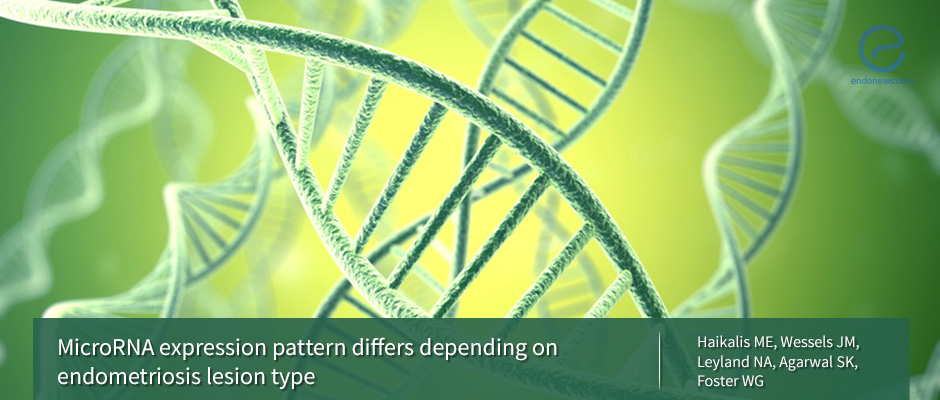Personalised Medicine for Endometriosis?
Jul 13, 2018
The lining of the uterus of women with endometriosis is molecularly different than that of women without the disease.
Key Points
Highlights:
- The lining of the uterus of women with endometriosis is different at the molecular level, to that of women without endometriosis even if they have chronic pelvic pain.
- Different types of endometriotic lesions are also molecularly different.
Importance:
- This knowledge could help doctors offer women with endometriosis an individualized medical care.
What's done here:
- Researchers analyzed endometrial biopsies and ectopic implants from 38 women who underwent laparoscopic surgery for chronic pelvic pain.
Key results:
- The expression of miR-204 was significantly lower in the lining of the uterus of women with endometriosis than that of women without the disease.
- The relative expression of miR-21, miR-424, and miR-10b was significantly different in different endometriotic lesions.
- The expression of all miRNAs isolated from endometriomas, peritoneal lesions, and deep-infiltrating lesions was different compared to samples obtained from the lining of the uterus.
Limitations:
- Most women in the study were of Caucasian descent meaning that the results obtained may not be valid across all ethnic groups.
- Most women in the study were in the advanced stages of endometriosis (stage 3-4). Therefore, it is not known whether these findings will be useful in identifying women in early stages of endometriosis.
- Lesion activity itself could have an effect on miRNA expression.
- The tissue samples could contain other cell types of unknown number and this could have an effect on the results.
- The women in the study were at different stages of their menstrual cycle. This itself could have an effect on the expression of different miRNAs.
Lay Summary
The lining of the uterus of women with endometriosis is different from that of women without the disease even if they have chronic pelvic pain found a study published in the scientific journal Biology of Reproduction. The difference is found at the level of small fragments of genetic material called micro RNAs or miRNAs that do not code for protein. These molecules control which proteins will be made and which ones will not in different tissues. The study found that different types of endometriotic lesions were also different in terms of miRNAs that they express.
“Taken together, our data further support the proposal that different endometriotic lesions types are biochemically distinct”, the researchers wrote. They concluded that by identifying the different patterns of miRNA expression, it might be possible to offer an individualized care to women with endometriosis because it might be possible to identify not only whether or not a woman has endometriosis but also the type of lesion that she has.
For the study, a team of researchers led by Dr. Warren G. Foster at McMaster University in Canada analyzed endometrial biopsies and ectopic implants from 38 women who underwent laparoscopic surgery for chronic pelvic pain. Following surgery, the researchers found that nine women did not have endometriosis and included these women in a control group.
Using a technique called quantitative real-time polymerase chain reaction (q RT-PCR), they checked the expression pattern of six different miRNAs that are known to be involved in endometriosis.
They found that the expression of one of the miRNAs called miR-204 was significantly lower in the lining of the uterus of women with endometriosis compared to that of women without endometriosis, even though they had pelvic pain.
When they looked at different endometriotic lesion types obtained from women with endometriosis, the researchers found that the relative expression of miR-21, miR-424, and miR-10b was also significantly different.
Finally, they found that all miRNAs isolated from endometriotic lesions were differentially expressed compared to the normal lining of the uterus. Endometriotic lesions were obtained from three different locations: from endometriomas, or cysts that form when the lining of the uterus grows in the ovaries, lesions found in the lining of the abdomen, and the so-called deep infiltrating lesions, which are found in and around the space between the vagina and rectum, or bladder.
“We suggest that identification of different miRNA expression patterns for endometriomas, peritoneal and deep-infiltrating lesions could contribute to individualized patient care for women with endometriosis,” the researchers concluded.
Research Source: https://www.ncbi.nlm.nih.gov/pubmed/29385395
miRNA lining of the uterus personalized medicine vagina rectum bladder endometriosis endometrioma

